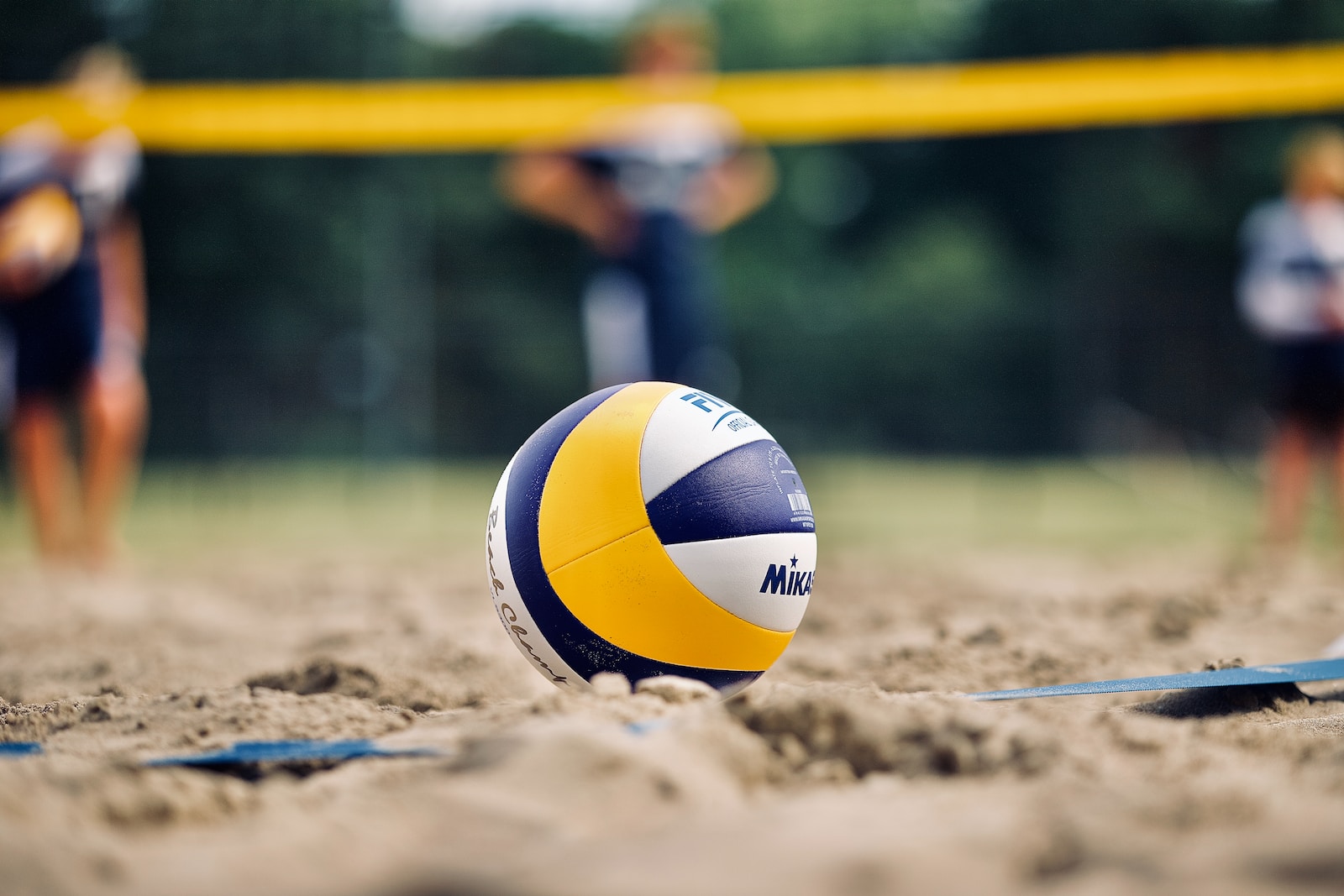In beach volleyball, returning a serve is a critical aspect of the game and a fundamental skill that players must master to be successful.
When the opposing team serves the ball, the receiving team needs to execute a solid return, setting up their offense and establishing a strong rhythm.
The serve return requires a combination of anticipation, positioning, and technique.
Anticipation is key in returning a serve, as players need to be prepared to react quickly to the trajectory and speed of the served ball.
They should observe the server’s body language and positioning, predicting the direction and type of serve that might be coming.
This foresight allows the receiver to adjust their stance and be ready to make a play. Positioning plays a significant role in a successful serve return.
Players must maintain a balanced stance with their knees slightly bent and weight on the balls of their feet, enabling swift and agile movements.
They should also position themselves to cover the most likely angles of the serve, while still being able to react to unexpected shots.
Factors That Affect Serve Returns In Beach Volleyball
Several factors can significantly affect serve returns in beach volleyball.
A player’s ability to effectively manage these factors can be the key to their success in returning serves and maintaining a strong offense.
Some of the critical factors that impact serve returns include:
Wind And Weather
Beach volleyball is played outdoors, and wind and weather conditions can significantly influence the trajectory and speed of a serve.
Players must adapt to the conditions, anticipate the effect of the wind, and adjust their positioning and technique accordingly.
Serve Type
The type of serve—whether a float, topspin, or jump serve—can greatly affect the difficulty of a serve return.
Each serve type has unique characteristics, and players must be familiar with different serve techniques to react and return them effectively.
Player Positioning
Proper positioning is crucial for successful serve returns. Players must cover the most likely angles of the serve while maintaining a balanced stance and staying agile.
Good positioning lets the player quickly react to the serve and set up their offensive play.
Communication And Teamwork
Beach volleyball is a team sport; effective communication between teammates is essential. Players must communicate their intentions and responsibilities during the serve return, ensuring that both players are prepared to react to the incoming serve.
Anticipation And Reaction Time
Reading the server’s body language and anticipating the direction and type of serve is vital for a successful return.
The faster players can react and adjust their positioning, the more likely they will execute a solid return.
Technique And Skill Level
Proper serve return technique, such as the forearm pass or “bump,” is essential for controlling and directing the ball toward a teammate.
A player’s skill level and proficiency in these techniques will directly impact their ability to return serves effectively.
Techniques For Returning A Serve In Beach Volleyball
Returning a serve effectively in beach volleyball is essential for setting up a strong offensive play. Here are some techniques that players can use to improve their serve return skills:
Forearm Pass (Bump)
The forearm pass, commonly known as the “bump,” is the most frequently used technique for returning serves in beach volleyball.
Players extend their arms and join their hands to execute the bump, creating a flat and stable platform with their forearms.
They should angle their platform towards their target and use their legs to generate power, cushioning the ball’s impact and directing it towards their teammate.
Hand Pass (Overhand Pass)
The hand pass, also known as the overhand pass, is another technique used for returning serves, particularly when the ball is approaching a higher trajectory.
Players position their hands above their forehead, creating a triangular shape with their thumbs and index fingers.
They should maintain a firm wrist, absorb the impact of the ball, and direct it toward their teammate using their fingers.
Tomahawk
The tomahawk is a technique for returning high serves or balls that are difficult to reach with a standard forearm or hand pass.
To execute the tomahawk, players extend their arms above their head, joining their hands with their palms facing each other, creating a flat surface for the ball to contact.
They then direct the ball towards their teammate using this hand position.
Anticipation And Reading The Server
Reading the server’s body language and positioning can help players anticipate the direction and type of serve, allowing them to prepare for the return more effectively.
Observing the server’s approach, arm swing, and contact with the ball can provide valuable clues about the serve’s trajectory and speed.
What Are The Steps To Successfully Return A Serve In Beach Volleyball?
In beach volleyball, returning a serve effectively involves several key aspects. The server must ensure the ball is visible to the opponents before initiating the serve.
A valid serve may contact the net and continue over to the other side. The receiving player must return the serve using a bump, as setting or attacking the ball is prohibited.
The primary objective of the server is to successfully send the ball over the net and within the court’s boundaries.
To return the serve, the receiving player should use a forearm pass technique, which involves creating a stable platform with their forearms to direct the ball towards their teammate.
Which Serve In Volleyball Is Considered The Most Challenging?
The Hybrid Serve I is considered one of the most challenging ways to serve in volleyball due to its advanced combination of techniques.
This serve incorporates elements of the jump serve, blending topspin and jump floater characteristics to deceive the receiving team’s passers.
In the Hybrid I (Top into Floater), the server initiates a Top Spin Serve motion but ultimately strikes the ball as a floater upon contact.
This unique combination of techniques makes it extremely difficult for the opponents to predict and react to the serve, increasing its effectiveness and difficulty level.
Is It Compulsory For The Return Of A Serve To Hit The Ground In Volleyball?
In volleyball, the serve does not need to bounce before being returned.
Instead, players should position themselves behind the baseline to allow for forward momentum when returning the serve.
The recommended technique for returning the serve involves using a forehand stroke with a backswing and follow-through.
As the player moves to hit the return, they should step forward to meet the ball, ensuring contact is made in front of their body.
This approach allows for better control and precision when returning the serve.
Can You Serve Twice In Volleyball?
In volleyball, a server has five seconds to execute a legal serve. If a bad toss occurs, the server can catch the ball, provided no swinging motion was made to attempt the serve.
The official will blow the whistle to halt the service, then signal for the server to try again. It is important to note that the server is permitted only one re-serve per service rotation.
This ensures the game maintains a smooth flow and prevents excessive delays due to multiple serve attempts.
How Can I Improve My Serve Receive In Volleyball?
Improving your serve receive in volleyball is crucial for effectively setting up your team’s offense.
Stand with your feet shoulder-width apart, knees slightly bent, and weight on the balls of your feet. This position allows for quick movement and better balance when receiving serves.
Keep your eyes on the server and watch their body language and contact point to anticipate the serve’s direction, speed, and spin.
When receiving the serve, use the forearm pass (also known as the bump).
Keep your arms straight and locked, with your hands clasped together. Angle your arms in the direction you want the ball to go, and use your legs to generate power.

